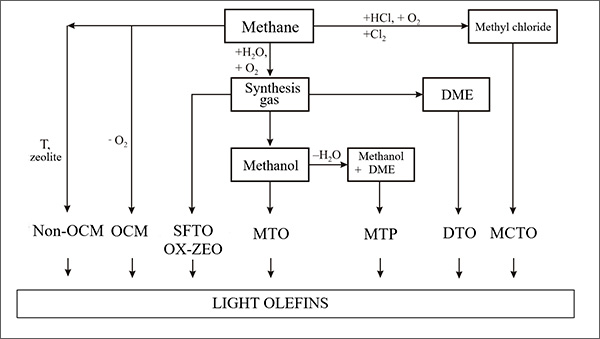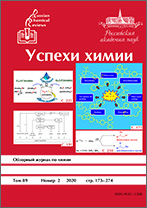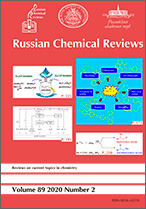|
This article is cited in 24 scientific papers (total in 24 papers)
Lower olefins from methane: recent advances
N. V. Kolesnichenko, N. N. Ezhova, Yu. M. Snatenkova
A. V. Topchiev Institute of Petrochemical Synthesis, Russian Academy of Sciences, Moscow

Abstract:
Modern methods for methane conversion to lower olefins having from $2$ to $4$ carbon atoms per molecule are generalized. Multistage processing of methane into ethylene and propylene via syngas or methyl chloride and methods for direct conversion of $\mathrm{CH}_4$ to ethylene are described. Direct conversion of syngas to olefins as well as indirect routes of the process via methanol or dimethyl ether are considered. Particular attention is paid to innovative methods of olefin synthesis. Recent achievements in the design of catalysts and development of new techniques for efficient implementation of oxidative coupling of methane and methanol conversion to olefins are analyzed and systematized. Advances in commercializing these processes are pointed out. Novel catalysts for Fischer–Tropsch synthesis of lower olefins from syngas and for innovative technique using oxide–zeolite hybrid catalytic systems are described. The promise of a new route to lower olefins by methane conversion via dimethyl ether is shown. Prospects for the synthesis of lower olefins via methyl chloride and using non-oxidative coupling of methane are discussed. The most efficient processes used for processing of methane to lower olefins are compared on the basis of degree of conversion of carbonaceous feed, possibility to integrate with available full-scale production, number of reaction stages and thermal load distribution.
The bibliography includes 346 references.
Received: 20.05.2019
Citation:
N. V. Kolesnichenko, N. N. Ezhova, Yu. M. Snatenkova, “Lower olefins from methane: recent advances”, Usp. Khim., 89:2 (2020), 191–224; Russian Chem. Reviews, 89:2 (2020), 191–224
Linking options:
https://www.mathnet.ru/eng/rcr4281https://doi.org/10.1070/RCR4900 https://www.mathnet.ru/eng/rcr/v89/i2/p191
|


| Statistics & downloads: |
| Abstract page: | 223 |
|






 Contact us:
Contact us: Terms of Use
Terms of Use
 Registration to the website
Registration to the website Logotypes
Logotypes








 Citation in format
Citation in format 
